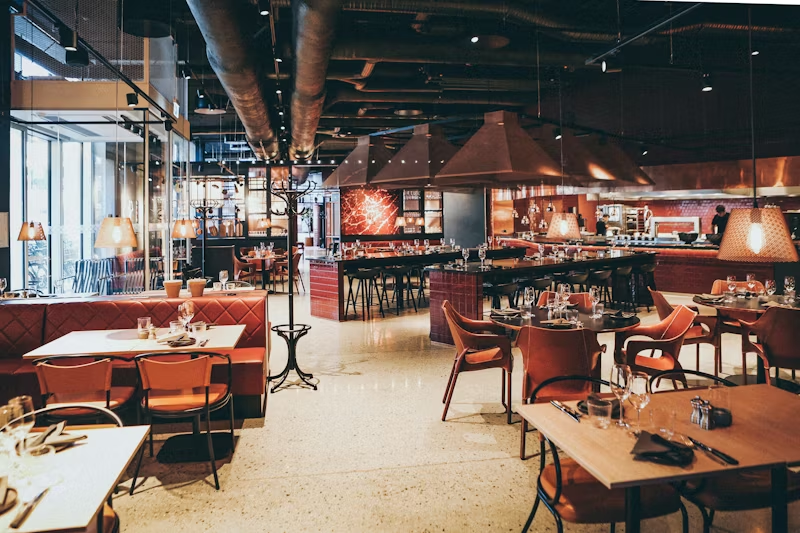Financial performance is the engine that powers every successful hotel, restaurant, or hospitality brand. While exceptional guest experiences and efficient operations are crucial, the true measure of long-term success lies in the meticulous management of the bottom line. Too often, hospitality operators view finance as a mountain of receipts and tax forms. However, the most […]
Category Archives: Management
The Modern Restaurant Tech Landscape For a long time, the restaurant industry lagged other sectors in adopting new technology. Many businesses relied on outdated legacy systems that were difficult to integrate and required costly developer intervention for even simple changes. However, over the last decade, the landscape has rapidly evolved. Today, modern platforms and software […]
Imagine a bustling hotel lobby, a vibrant restaurant, or a thriving resort, all operating like a well-oiled machine. To keep these engines of hospitality running smoothly, there’s a critical, often overlooked component: revenue management. It’s the underpinning of profitability, the lifeblood of sustainability. Yet, it’s often shrouded in complexity and misunderstood. So, let’s strip it […]
Revenue Management for Hospitality Industry: Profitability in the hospitality industry isn’t just about filling rooms; it’s about optimizing every available room, table, or service offering. It’s the difference between a business that survives and one that thrives. In today’s competitive landscape, success hinges on a sophisticated, data-driven approach to pricing and inventory, a practice known […]
It’s virtually impossible to overstate the importance of understanding hospitality business management in today’s rapidly evolving business landscape. This field, which combines essential elements of finance, revenue management, and customer service, is the beating heart of any successful hospitality venture. If one’s aiming to thrive and not just survive in the hospitality industry, comprehending these […]
In today’s dynamic hospitality landscape, characterized by fluctuating demand, intense competition, and escalating operational costs, revenue management for the hospitality industry isn’t just an advantage; it’s a necessity. This discipline has become the cornerstone for businesses aiming to thrive, allowing them to optimize rates, increase occupancy, and, ultimately, maximize profitability. Effective hospitality revenue management strategies […]
When operating a hospitality business, it’s hard to know if your financial metrics are on par with the industry, especially with a changing economy and unique concept types. From unexpected costs and high rent to fluctuating labor controls, keeping a firm grip on restaurant finances is a continuous marathon. In such an unpredictable environment, it’s […]
In the dynamic world of hospitality and tourism, simply opening your doors is no longer enough to guarantee success. To thrive in an increasingly competitive and rapidly evolving landscape, especially in the wake of global shifts like the recent pandemic, businesses need a sophisticated approach to profitability. This is where revenue management for hospitality and […]
Remarkably, recent statistics reveal that 60% of hospitality businesses, including hotels and restaurants, don’t have a dedicated Chief Financial Officer (CFO). This figure sparks curiosity as to why an industry, often plagued with financial complexities, isn’t fully embracing professional CFO services. Could it be a lack of understanding of the benefits, or are there potential […]
As businesses embark on their growth journey, particularly within the dynamic and often volatile landscape of the hospitality industry, the need for astute financial leadership becomes paramount. Navigating the complexities of cash flow, profitability, and strategic expansion requires more than just diligent bookkeeping; it demands executive-level financial expertise. This is where the concept of your […]
Many people don’t realize that a significant number of successful restaurants owe their efficient operations to consulting services. These experts analyze the restaurant’s current practices, identify areas for improvement, and devise strategies that enhance productivity and profitability. They’re the unseen hands that turn struggling establishments into thriving businesses. But how do they do it, and […]
A point-of-sale system is a key function of a hospitality business. When choosing a new one, operators should consider a system that fits both your budget and meets the required functions of your operation. This can depend on factors like the complexity of your restaurant. Cost is one of the most important factors in this […]
As the saying goes, ‘knowledge is power’, and in the hospitality industry, understanding the key trends in revenue management can be the difference between profit and loss. It’s no longer just about filling rooms; dynamic pricing, advanced analytics, and consumer behavior are reshaping the landscape. So what are these trends and how are they impacting […]
Building a successful restaurant goes beyond serving great food and offering stellar service. To ensure ongoing growth and long-term success, it is essential to establish a solid foundation rooted in operational excellence, employee engagement, and sound financial management. Whether you are looking to maintain consistency, adapt to changing trends, or prepare for expansion, each aspect […]
The concept of selling can be driven by a variety of factors, whether it’s post-COVID fatigue, the desire to cash in on your success, or simply reaching an age where you’re ready to step away after years in the industry. Whatever the reason, planning your exit strategy is as crucial as building the restaurant itself. […]







































